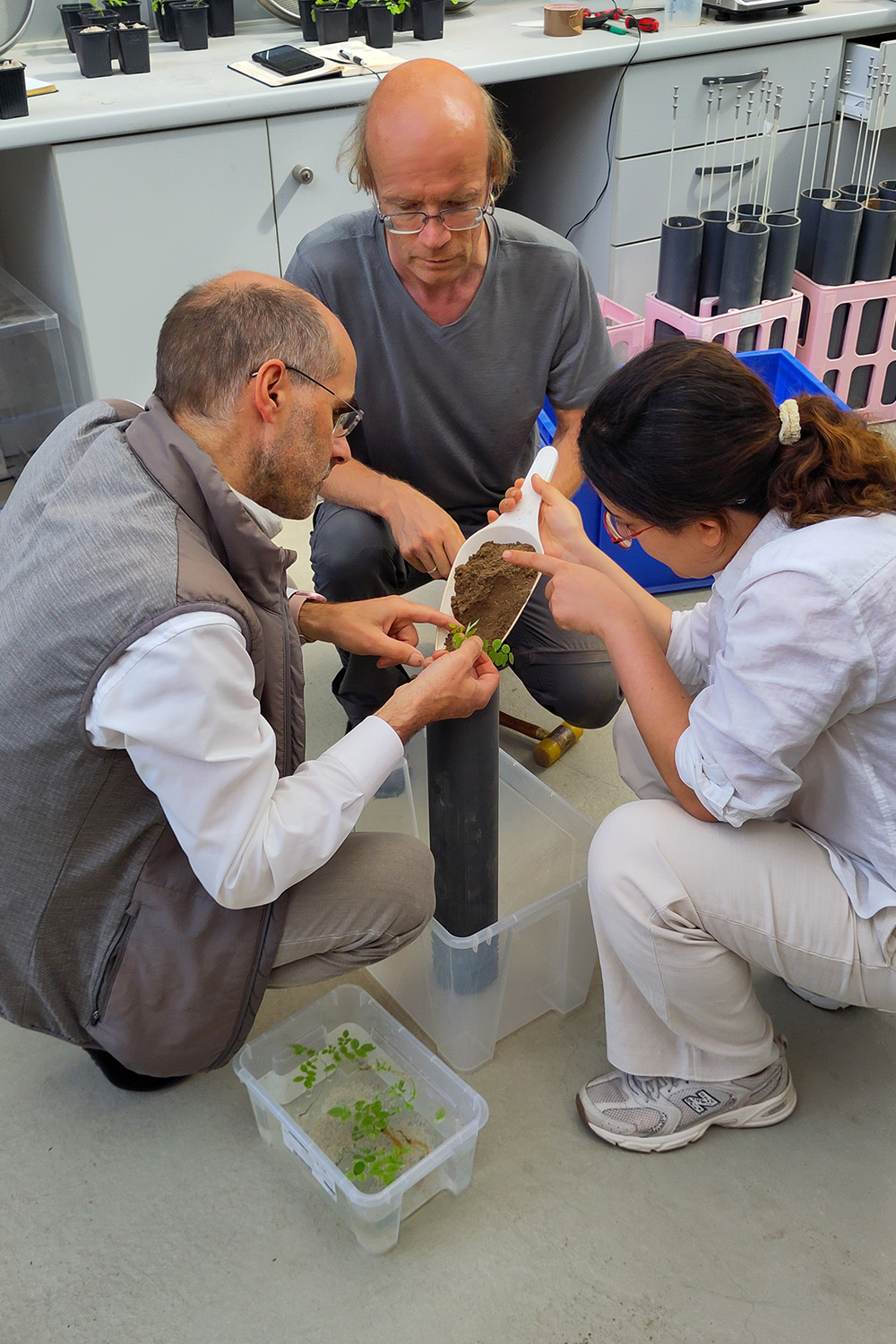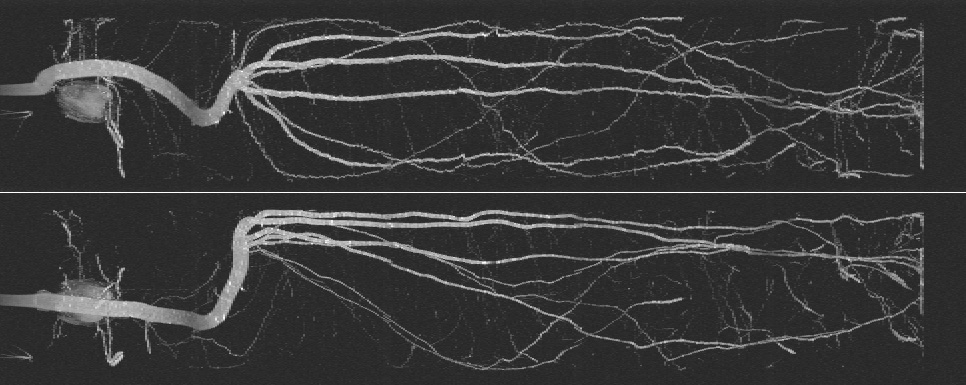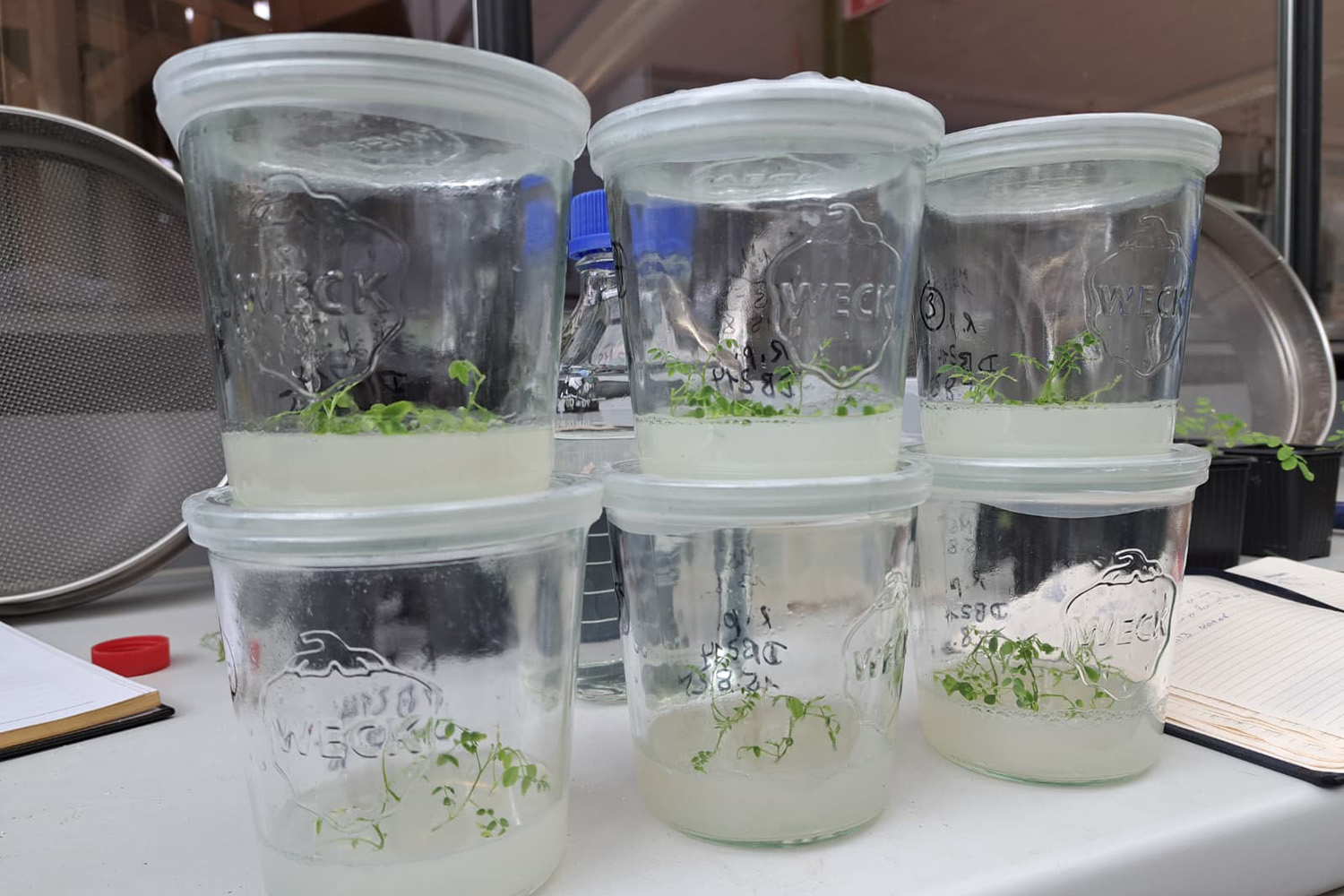Watching tree roots grow
In August 2025, an unusual alliance between plant biology and geomechanics brought researchers from Technische Universität Braunschweig to the Forschungszentrum Jülich (FZJ). In the MRI laboratory of the Institute of Biological and Geosciences, they not only gained insights into experimental halls and facilities, but also got hands-on experience: small black locust trees (Robinia pseudoacacia) were repotted into containers specially developed for magnetic resonance imaging (MRI).

Prof. Dr. Robert Hänsch (IPB), Dr. Dagmar van Dusschoten (FZJ) and Ilnaz Sarhangi-Fard (IGG) plant a black locust tree in the experimental soil. Photo credits: Max Wiebicke (IGG)
The young trees are part of a pilot study investigating the growth of root networks under different conditions. Modern imaging techniques such as magnetic resonance imaging (MRI) and computed tomography (CT) can be used to visualise the various components of the multiphase system – roots, soil, water, and air. The aim is to gain a better understanding of how plants interact with their soil and how environmental factors influence root formation.
The focus is on how dry periods change root growth and the surrounding soil. Due to climate change, such phases are occurring more frequently and for longer periods in many regions. Root systems play a key role in this process: they absorb water, anchor the trees and at the same time influence water storage in the soil. Compared to the above-ground parts of plants, the dynamics of roots under drought conditions have not yet been sufficiently researched – this is where the pilot study comes in.
Predicting plant response
The 4D image data obtained in the project show how roots develop in different soils – both under normal conditions and during prolonged dry periods. This makes it possible to quantify how quickly and in what way different tree species – robinia, oak and poplar – respond to drought. At the same time, the data provides information on the water retention capacity of the soil in the immediate vicinity of the roots. In the long term, the results should help to improve models of the root-soil-water system and thus make it possible to predict plant reactions under rapidly changing environmental conditions more accurately.

Root of an oak tree segmented using magnetic resonance imaging. Illustration: Dagmar van Dusschoten. Picture credits: FZJ
Symbiosis of roots with bacteria
Another focus is on the formation of root nodules in black locust trees. These are created through symbiosis with rhizobia (nodule bacteria in the soil), which supply the tree with additional nitrogen, especially in nutrient-poor soils. In an ongoing project, the growth of the nodules and the entire root network in sandy soils is being tracked using regular CT scans. The MRI examinations now planned will supplement this data: while the soil is barely visible in MRI, the water-containing roots can be visualised much more clearly.

Black locust trees in in vitro culture; grown at the Institute of Plant Biology. Photo credits: Robert Hänsch/TU Braunschweig
And how is it being funded?
This project is made possible by close cooperation between: The Institute of Geomechanics and Geotechnics (Prof. Dr. Marius Milatz), the Institute of Plant Biology (Prof. Dr. Robert Hänsch) and the Institute of Applied Mechanics (Prof. Dr. Ralf Jänicke) have joined forces and successfully secured funding for this measurement campaign from the German Plant Phenotyping Network (DPPN).
Text: Dr. Max Wiebicke
